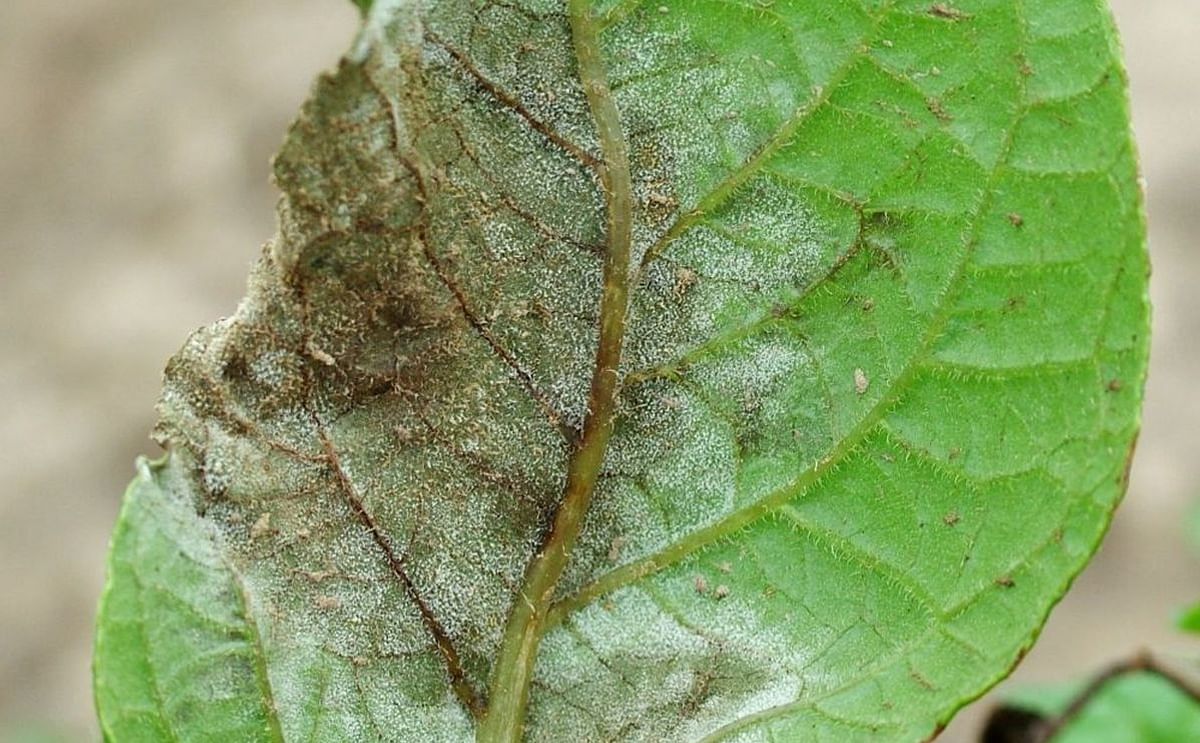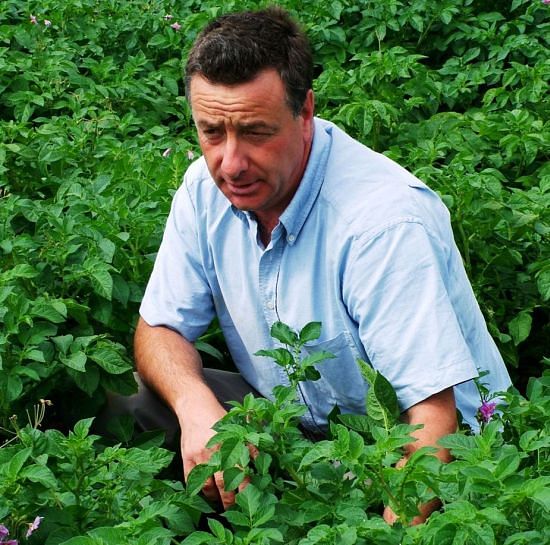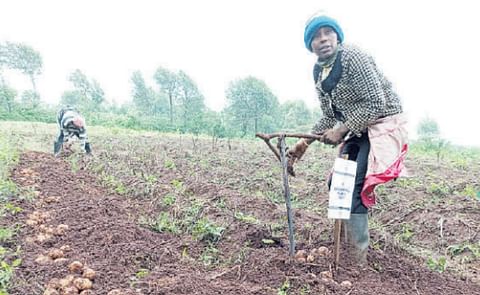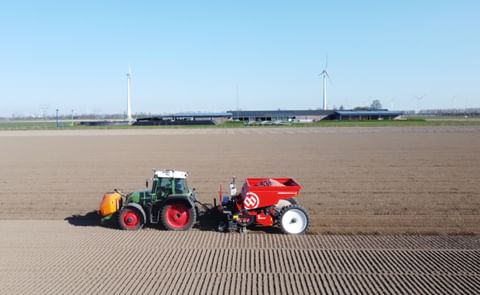The dark green 37_A2 form of Phytopthora infestans has quickly spread across Europe, reaching England two years ago
New Late Blight Strain in UK requires Fresh Approach to Control

Late Blight control strategies in the United Kingdom will have to change this season if potato growers are to combat the spread of a new aggressive, fungicide-insensitive/ resistant strain of the disease, leading agronomy firm Hutchinsons says.
The dark green 37_A2 form of Phytopthora infestans has quickly spread across Europe, reaching England two years ago when five cases were reported.

Darryl Shailes, Agronomist at H. L. Hutchinson Ltd
The new strain is at least, if not more, aggressive than the dominant blue 13 and pink 6, but the crucial difference is that it appears equally aggressive on foliar and tuber blight, he warns.
Darryl Shailes:
“There was a massive failure of fluazinam at the Eurofins blight trials last year and dark green 37 was implicated in several cases of store breakdown.”Furthermore, dark green 37 has reduced sensitivity to fluazinam, which is in many fungicides often used towards the end of the season to reduce tuber blight.
Darryl Shailes:
“Fluazinam has been a cost-effective option for tuber and foliar blight, especially against the blue 13 strain, but until we have access to real-time information to determine the exact genotype of blight spores present in the field, we have to question its position in blight programs.”
“The yield loss from foliar infection of blight is often very small except in the worst years but the consequential losses from tuber blight can be massive.”
Spreading Threat
Dark green 37 is most likely to have reached the UK in imported seed, but also spreads via airborne spores, says John Keer of Richard Austin Agriculture.
John Keer:
“We expect a progression of the new strain from hotspot areas this year, but it’s hard to predict where we’ll see it.”Dr Keer also says that despite a wide diversity of blight genotypes in the UK, usually only one is responsible for outbreaks in the field. All growers should therefore be be wary of the new strain and not assume crops are “safe”, as fluazinam will be ineffective if dark green 37 is present, he says.
“Blue 13 and pink 6 took two or three years to spread and become more dominant, whereas other genotypes such as A33 have remained very localised.”
Using it risks a failure of blight control and favours selection of more resistant strains, so the focus must be on alternative chemistry.
Control Options
The increasing aggressiveness of new blight strains makes it vital to manage risk from the outset, says Mr Shailes, who warns that with the right weather, blight can be present as soon as crops emerge.
All inoculum sources should be controlled, including volunteers and outgrade piles. Growing more resistant varieties affords some flexibility around blight spray timings, but with ever-changing disease populations it is only part of risk mitigation and chemical options remain essential.
Darryl Shailes:
“There is a myriad of materials growers can use instead of fluazinam. As with any fungicide strategy, alternate chemistry so you’re not relying on any one active ingredient or mode of action.”Early-season options include fungicides based on cymoxanil, mancozeb, benthiavalicarb or fluopicolide + propamocarb; mid-season, the new oxathiapiprolin-based fungicide could fit into the rapid canopy growth stage; and once through this stage, consider products with tuber blight activity, such as those based on fluopicolide , cyazofamid or zoxamide he says.
There may still be a case for using fluazinam-based products for sclerotinia or botrytis control in susceptible varieties around flowering, Mr Shailes adds, but if so, ensure it is mixed with other actives that will effectively control blight even if dark green 37 is present.
Blight control tips
- Minimise fluazinam use
- Use a mix of different actives and alternate through the season
- Include multisite actives
- Manage blight sources such as volunteers and outgrade piles
- Maximise use of other integrated control options. E.g. resistant varieties, rotational breaks, clean seed tubers.
He recommends applying a blight fungicide two to three days after the first desiccant.
John Keer:
“This allows product to hit the stems and leaves lower down the canopy and opens up a range of actives for potential use without increasing browning risk.”
Regional View
Herefordshire-based agronomist Andrew Goodinson says the presence of dark green 37 in his area will prompt big changes to blight programmes.
He plans to avoid using fluazinam in at least the first two blight sprays and at burn-off for anything going into store, favouring cyazofamid early in the programme and mandipropamid or fluopicolide + propamocarb later. Benthiavalicarb + mancozeb is another late-season option offering tuber blight activity and alternative chemistry, he notes.

Andrew Goodinson, Agronomist at H.L. Hutchinson Ltd
Andrew Goodinson:
“If it’s a high pressure season, we may not use any fluazinam at all.”If fluazinam is used, Mr Goodinson says a robust rate must be applied and it should be mixed with an effective blight product.
“However, fluazinam in the middle of the programme is quite good for sclerotinia and other stem issues, so if pressure is lower it may still be a cost-effective option for crops not going into store.”
Like to receive news like this by email? Join and Subscribe!
NEW! Join Our BlueSky Channel for regular updates!
Highlighted Company
Sponsored Content
Sponsored Content
Sponsored Content
Sponsored Content
Sponsored Content








